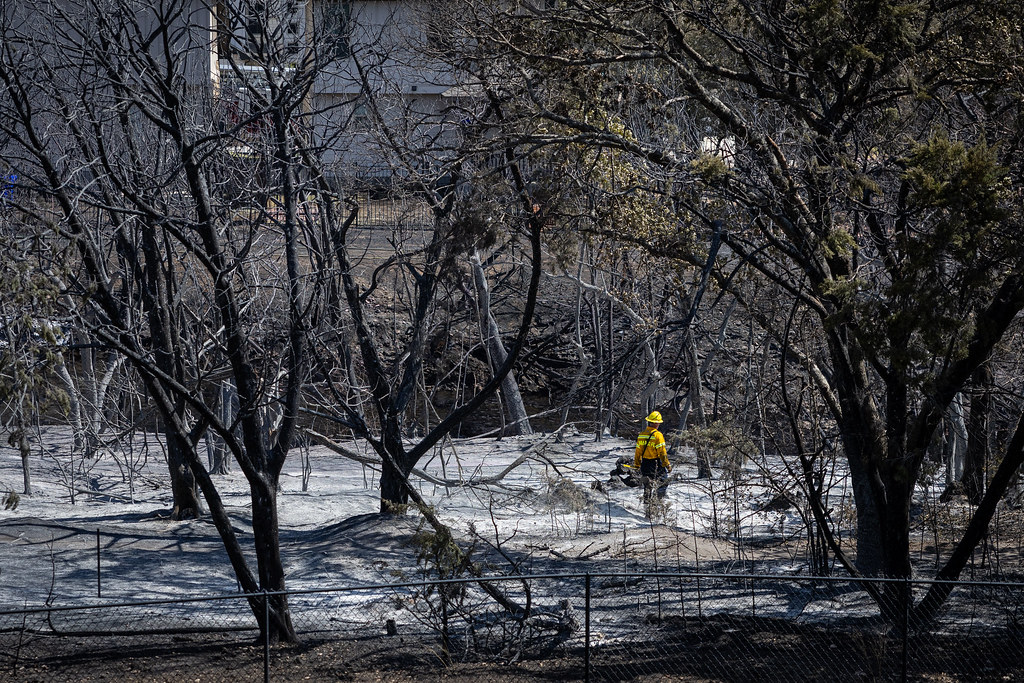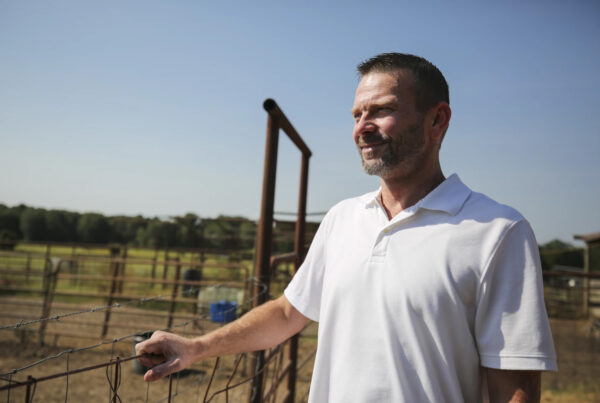It’s been a hot, dry summer – and the extended heatwave has been a catalyst for wildfires across the state.
The Texas A&M Forest Service has raised the State Wildfire Preparedness Level to Level 4 – one level below the highest possible – due to the recent increase in wildfire activity.
The Austin area alone has seen three brush fires this week, including one in Cedar Park that destroyed an apartment building and caused the evacuation of hundreds of homes and businesses.
Kari Hines, a program coordinator at the Texas A&M Forest Service, said this fire season has been above average so far, following a 2022 that was one of the most active years since 2011.
“We know that even though we have had more recent rain in some parts of the state compared to both 2011 and 2022, the heat that we keep breaking records with is really drying out our vegetation very quickly,” she said. “This week in particular, we know we’re going to have sustained winds in some places of over 20 miles per hour, gusts of even higher. And when you combine that weather with our dry fuels, you really create a condition where firefighters have a harder time being able to safely contain wildfires.”
How to prevent wildfires in Texas
Hines said that with almost 90% of wildfires in Texas caused by people, there are steps everyone can take to reduce them. The causes for more than half of the state’s fires fall under two categories: debris burning that gets out of control and “equipment use,” which includes vehicles, machinery, welding and ranching equipment, among others.
Equipment use “is a fairly broad category. But one of those in particular that we know is an issue is roadside starts,” Hines said. “Everyone loves to think about cigarettes out the window – and yes, of course, that can be a cause – but [the] majority of these are from metal hitting the road. So if you have tow chains or secure lines that aren’t properly secured and they can hit the road; if you have a flat tire and your rim is hitting the road; if you have a vehicle accident – any time metal hits metal or metal hits the road, there are sparks being created.”
And if you pull over onto the side of the road onto dry grass and your catalytic converter comes in contact with it, that can also easily start a fire, Hines said.
» GET MORE NEWS FROM AROUND THE STATE: Sign up for our weekly ‘Talk of Texas’ newsletter
Be prepared to evacuate by knowing your exit route
For those who are worried about having to evacuate their home because of wildfire, Hines said there are steps to take in advance to prepare.
“One of the most important things is knowing how to get out of your area. We do live, some of us, in areas that are quite rural, and sometimes this means it’s a one way in, one way out situation,” she said. “But if you find yourself in an area that has multiple ways in and out of the neighborhood, don’t just go the way you always go. Make sure you know the back exits.”
Hines said it’s also crucial to listen to first responders in emergency evacuation settings.
“Our fires in Texas generally move extremely quickly,” she said. “We’re not looking at situations where you have hours or even potentially days to evacuate. So if you are being told to evacuate, it’s because fire is either going to be there very quickly, or first responders are very soon – if not already – going to be swarming your area. And we need room to be able to safely operate, and that often means not having the public be there.”
» FROM KUT: Here’s what you should do if a wildfire threatens your home
How to safely evacuate pets during a wildfire
Hines suggests including pets and livestock in your emergency preparedness planning by keeping track of where they are if evacuation might be a possibility.
“If you have animals that generally stay outside, have them a little bit closer to home,” she said. “Maybe having cats and dogs that are more used to being contained – so whether that means being properly leash trained or having cats that are used to being put in carriers. Making sure that your animals aren’t going to be trying to hide from you while you’re trying to get them out the door.”
More information about how to plan for your pets and livestock — as well as other preparations to take — can be found on the Texas A&M Forest Service website.












